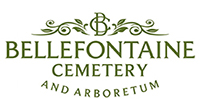
Summer puts the spotlight on prairie plants in Missouri, and many of the most hardy, drought-tolerant, and attractive native perennials occur in prairies, woodland edges and glades. Meadow phlox (Phlox maculata) is often found growing along moist, open woodlands, or moist meadows along rivers and streams. This peculiar phlox species is a little more finicky than its more common cousins, Phlox paniculata and Phlox divaricata, in that Phlox maculata requires consistent moisture, and prefers soils that retain water. In less than ideal conditions, meadow phlox is short-lived, and may disappear from the garden after just a season or two. The cone-shaped panicle of flowers rises to three feet in summer, in shades of purple and pink, and less often white.

These tall blossoms distinguishes this phlox from other species, which typically have flower clusters that are wider than they are tall. Stems are speckled with reds and purples, hence the other common name: spotted phlox (in fact, the species maculata comes from the Latin for ‘spotted’). Butterflies, moths, and hummingbirds feed heavily on the nectar of meadow phlox, so expect droves of pollinators on this native perennial. Both the Spotted Straw and Olive Arches moths utilize Phlox maculata as a host plant, laying their eggs on its leaves. The Spotted Straw moth can be somewhat destructive, feeding on both the flowers and foliage, where the Olive Arches moth caterpillar feeds only on the leaves. Gardener beware: Phlox maculata is heavily browsed by groundhogs, rabbits, and deer, and should not be planted where these animals are an issue.

Blooming in concert with the meadow phlox, and just as curiously uncommon, is the dotted mint (Monarda punctata). A low-growing, creeping perennial, dotted mint features aromatic leaves (similar to the scent of oregano) and flower stalks that feature multiple flower clusters growing one above another, a trait unique to this species of Monarda in Missouri. The flowers are somewhat inconspicuous, but upon closer inspection, they reveal themselves to be quite spectacular. Golden yellow, two-lipped blooms are dotted with a deep purple, and occur in whorls around the flower stalk. A more attractive feature are the whitish-pink to lavender bracts that occur beneath and above the circled cluster of flowers. Bracts are modified leaves, colored to attract pollinator. You might be more familiar with poinsettias’ large, colorful bracts. Myriad bees are attracted to the flowers for the nectar and pollen, as well as butterflies, including the endangered Karner Blue butterfly, which only lives in sandy habitats. The caterpillars of the Pyralid moth and Gray Marvel moth use Monarda punctata as a food source. Found along rivers and streams in sandy meadows and prairies, Monarda punctata spreads to form dense colonies, but is not considered aggressive. Dotted mint can tolerate other soil types without competition from nearby perennials. Grown best in full sun with good drainage, dotted mint provides a long summer bloom (June – September). As with all species of Monarda, powdery mildew can be a problem – especially with overhead irrigation.


Towering above both the meadow phlox and dotted mint stands the wild senna (Senna hebecarpa). Growing to six feet in height, wild senna sports gray-green compound leaves that fold flat in hot, dry weather. In mid-to-late summer, copious clusters of brilliant canary yellow flowers occur along the top two feet of Senna hebecarpa. The flowers are followed by long, slender, blackish-brown seed pods fed upon by Bobwhites. The Sleepy Orange Sulphur, Orange-barred Sulphur, and Cloudless Sulphur butterflies all seek out wild senna as a larval host plant, as well as the caterpillars of the Common Tan Wave and Black Witch moths. A number of bumble bee species visit the flowers, and are the only effective pollinators of this genus. Mammalian herbivores do not feed on the leaves of Senna hebecarpa due to its powerful laxative qualities. Grown best in moist to average soils in full sun, underground rhizomes of Senna hebecarpa can spread to form small colonies. Gardener be warned: consumption of wild senna can be toxic or even fatal to humans, especially children.

Compiled by Cara L. Crocker
